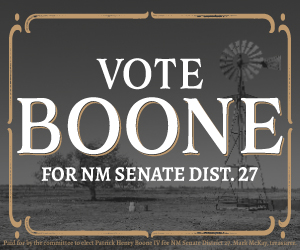Only in Your State | New Mexico | Original Article by Juliet White | Rewritten by Jaymi Firestone
Lincoln, near Ruidoso, is one of the best-preserved towns in New Mexico. You can still see El Torreon, a fortification (defensive wall) that the Spanish used during Apache raids.

However, the most dramatic part of Lincoln’s history comes later, in the days of the Wild West.
That’s when the Lincoln County War turned this small town into a battlefield.
Today, this historic site includes 17 original structures and outbuildings. As you wander down the street, you’re walking in the footsteps of outlaws like Billy the Kid.
In fact, President Rutherford B. Hayes once declared Lincoln’s main drag “the most dangerous street in America.”

Map of the “most dangerous street in America”
The Lincoln County War (1878-1881) was provoked by extreme business rivalry and the quest for money. The two sides were vying for prominence in the beef market and dominance of this part of the state.
In one corner of the ring was Lawrence G. Murphy. He co-owned the Murphy & Dolan mercantile, a saloon and store that opened in 1874.

Lawrence G. Murphy
It was the only store around, so he had a monopoly. If you’re wondering whether Murphy exploited this situation and jacked up prices, the answer is a resounding YES.
Murphy had two business partners: James J. Dolan and John H. Riley (both pictured below).

James J. Dolan

John H. Riley
In the other corner were Alexander McSween and John Henry Tunstall, backed by John Chisum. They opened a competing store, J. H. Tunstall & Co, in 1876, which is still standing.

Alexander McSween

John Henry Tunstall
Murphy wanted the competition from McSween and Tunstall to leave town. Lucky for him, and only because of his prominence in town, Murphy had some control over the local sheriff and his men.
So, although there was a semblance of law in Lincoln, it wasn’t all black and white. There was a lot of grey area.

In February 1878, Tunstall was murdered in cold blood, and legend has it that it was at the hands of Murphy and Dolan’s footmen. There were several witnesses to the murder, including Billy the Kid.
The latter and some others, who had a lot of respect for Tunstall, were angered by the murder, and swore to get revenge on those responsible for his death.
This was what sparked the Lincoln County War.
The town split into two factions. The gang seeking to avenge Tunstall were called The Regulators.
Those on the other side with Murphy and Dolan included Sheriff Brady, his deputies, and the Jesse Evans gang, who were a feared group of outlaws and robbers in the late 1800s.
Over the following five months after Tunstall’s death, roughly a quarter of Lincoln’s population was murdered.
The Regulators launched their plan for revenge. They lay in wait, and when Sheriff Brady and his deputy walked down the Main Street in Lincoln, they ambushed and shot them to death. Sheriff Brady was 48.
The Lincoln County War culminated in a “The Five Day Battle.” The Regulators amassed 60 men. Many in the area supported them because they were sick of paying the exorbitant prices at Murphy’s store.
The new sheriff – working for Murphy – gathered 40 men in the Wortley Hotel on Lincoln’s main road, to take on the Regulators.
Scuffles ensued but, on day four of the 5-day battle, well-armed troops from Fort Stanton showed up. Their role was supposedly to protect the women and children, but they were known to side with Murphy and Dolan.
Their arrival only escalated the situation though. And with the escalation, the sheriff set fire to McSween’s house to force The Regulators out.
Billy the Kid was one of the men stuck in the slow-burning building. McSween emerged, unarmed and supposedly was trying to surrender when a sheriff’s deputy shot him five times. The deputy was killed that night, along with two more of McSween’s men. All the others got away.
President Hayes was unimpressed by the New Mexico governor’s handling of the situation, so he appointed Lew Wallace as the new governor.
In November 1878, Governor Wallace declared that anyone involved in the Lincoln County War would be granted amnesty. In order to keep his new post, the fighting had to stop, so he used this tactic to get all those in the midst of the war to stop their battling.
Billy the Kid had other charges pending against him, so amnesty didn’t help him as it did the others.

Billy the Kid
Governor Wallace promised to give a reward of $500 to anyone who captured him.
Sheriff Pat Garrett did just that.

Sheriff Pat Garrett – Predecessor to Sheriff Brady who died in the battle
Billy the Kid was sentenced to death by hanging. He was imprisoned in the Old Lincoln County Courthouse (pictured below).

However, in April 1881, Billy the Kid broke out of jail, slaughtering two guards, and escaped on horseback.
Sheriff Pat Garrett eventually tracked him down in Fort Sumner and shot him. Visit the Billy the Kid Museum in Fort Sumner for the rest of that story.
Today, as you walk down Lincoln’s main street, you’ll find yourself surrounded by buildings like the one below, that hold the history of a gruesome past.

You’re even still able to go inside J.H. Tunstall & Co. and view original merchandise from the 19th century. Don’t worry though, there are no flying bullets or Regulators to worry about now. You’ll only find some history that will make you feel like you jumped in a Delorean with Doc & Marty and traveled back to the Wild, Wild West.





























